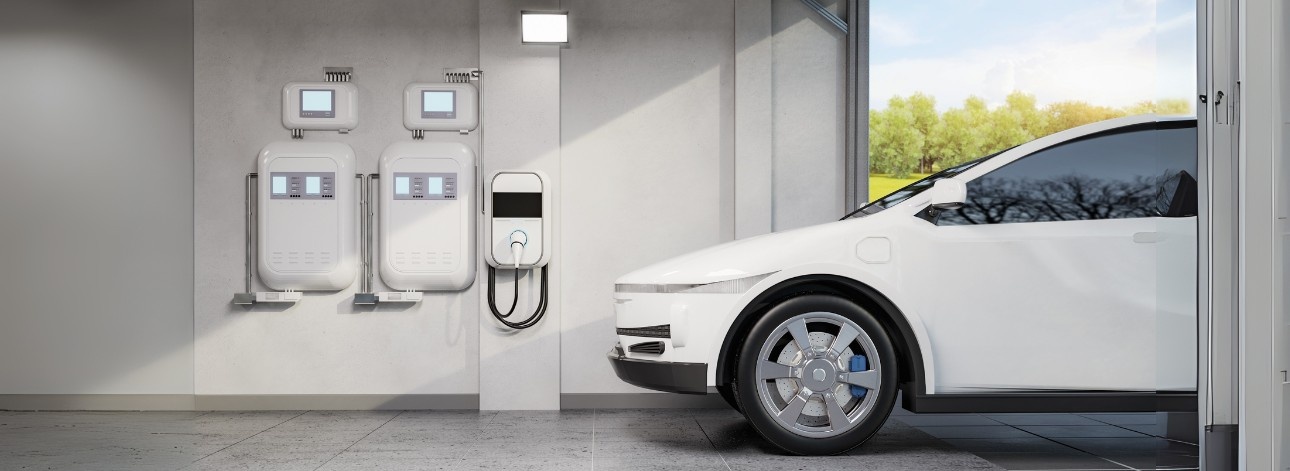All EV wall chargers in one place: electric car charging pro
Electric vehicles (EVs) are becoming increasingly popular, and as a result, demand for suitable charging solutions is also growing. There is a wide range of home charging options available, but how do you choose the most suitable wall charger for your electric car? In this article, we will introduce the different types of electric car chargers and charging options, and help you make the best decision so that you can charge your cars safely and efficiently.
Types of electric car chargers
Electric car chargers can be divided into three basic types: slow, fast, and ultra-fast. Each type is suited to different needs and environments, and each has its own advantages and disadvantages. Slow chargers, which are often used in home environments, are alternating current (AC) chargers that typically take 2-6 hours to fully charge. These are ideal if the car is not needed immediately and overnight charging is the most practical solution.
Fast chargers and quick chargers, on the other hand, are useful in locations where the car is needed quickly, such as public charging stations, along highways, or in high-traffic areas. Fast chargers typically take 1-2 hours to fully charge, while superchargers use direct current (DC) charging and can reach up to 80% charge in half an hour. This can be particularly useful on long journeys when you need to get going again quickly. The choice between the different types of chargers depends on the conditions of use and the charging requirements of the car.
Differences between slow, fast, and rapid chargers
Slow chargers (AC chargers) are the most common for home use, as they can be used with any standard electrical outlet. Fast chargers and quick chargers (DC chargers) provide faster charging times, but generally require higher power and special connectors.
- Slow charging: Typically takes 2-6 hours to fully charge the battery.
- Fast charging: They can provide higher power charging within 1-2 hours.
- Flash charging: Up to 80% charge can be achieved in 30 minutes.
Fast charger head operation and compatibility
A fast charging head is a device that allows you to charge your car faster. It is important that the charging head is compatible with your car, otherwise it will not work. The most common types of fast charging heads are CHAdeMO, CCS, and Tesla chargers.
Electric car charger connector types
The types of connectors basically depend on the type of car and the charging power. Electric cars most often useType 1 or Type 2 connectors for home charging, while fast chargers and flash chargers require different standards.
AC - types and characteristics of alternating current charging
AC chargers (alternating current chargers) are most commonly used in home and workplace environments, as most households have basic electrical connections available. These are available as 1-phase EV wall chargers and 3-phase EV wall chargers.
Type 1 and Type 2 connectors: what you need to know
Type 1 connectors are primarily used in the American and Asian markets, while Type 2 connectors are more common in Europe. Type 2 connectors provide higher power and are compatible with most newer electric cars.
DC - introduction to direct current fast chargers
DC (direct current) fast chargers provide extremely fast charging, but are not generally available at all locations. Therefore, they are more commonly found in public areas, such as along highways, where electric cars can be quickly charged before long journeys.
Home EV charging options
One of the most popular home charging solutions is the wallbox, which provides fast and convenient charging for everyday use.

Electric car wallbox and plug-in charging: advantages and disadvantages
Wallbox: Provides higher performance and is safer than traditional plug-in charging.
Plug-in charging: Easily accessible, but much slower than using a wallbox.
Wall chargers for electric cars: choose a safe and efficient solution!
Wall chargers have many advantages, such as higher charging speeds and built-in safety features. For best results, choose a wall charger that is compatible with your car and can handle the power supply available at your location.
How to charge an electric car? Compatibility and safety considerations
The most important considerations when charging are the compatibility of the car and the charger, as well as safety. When charging an electric car, it is important to ensure that the type, power, and connector of the charger are compatible with the vehicle's electrical systems. Different types of chargers, such as AC (alternating current) and DC (direct current) chargers, use different currents, so it is important to know which type is most suitable for your car.
AC chargers are slower but safer and easier to install in a home environment. In contrast , DC fast chargers are much faster, but they are more expensive to install and are located in specific locations, such as along highways. In addition , special attention must be paid to safety in the case of wall chargers, as they often remain connected to the mains for longer periods of time, which increases the risk of overheating or other electrical problems.
When installing a charger, it is important to ensure that the network is properly grounded and that all electrical equipment complies with the latest safety regulations. Taking into account the appropriate compatibility and safety measures will ensure that charging is efficient, safe, and problem-free. It is best to have a professional perform the installation and check that the system is working properly.
Future trends in electric car charging
In the future, we can expect to see more fast chargers and innovative technologies that will enable even faster and more convenient charging of electric cars. The integration of smart chargers and renewable energy sources will open up new possibilities for sustainable and efficient car charging.
SOLARKIT recommendations: how to choose the ideal EV charger!
SOLARKIT experts can help you choose the best charger. They will help you find the charger that best suits your needs, whether for home, work, or public charging.
FAQ
1. What type of EV charger should I choose for home use?
For home use ,a wallbox is the best choice as it offers a fast, safe and convenient solution.
2. What is the difference between Type 1 and Type 2 connectors?
Type 2 connectors provide higher power and are more common in Europe, while Type 1 connectors are found in the American and Asian markets.
3. Why is compatibility important when choosing an electric car charger?
Choosing the right charger ensures that the charging process is fast and safe, avoiding overheating or improper connection.
4. Why can't I charge my car with a traditional outlet?
Although a traditional outlet is convenient, it provides slow charging and does not have the necessary safety features, such as surge protection.
5. How can I ensure a safe charging environment at home?
By choosing theright wall charger with built-in safety features, you can ensure that charging is safe. It is also important to have the charger installed by a professional who will check that the electrical network is properly grounded.
